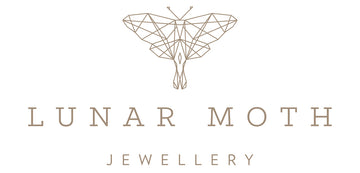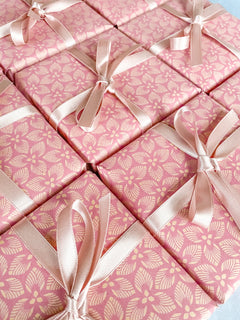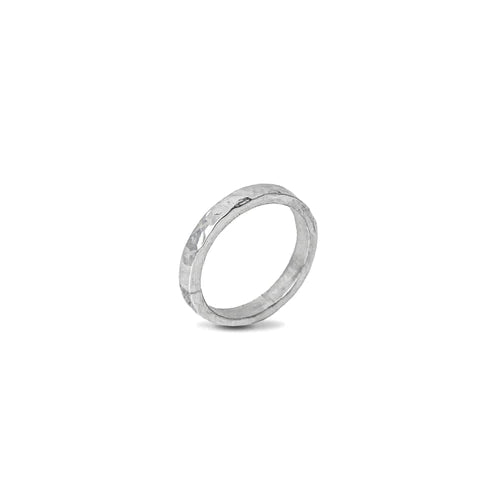The Art Of Handmade Jewellery - A Guide For Beginners
Jewellery making is an ancient art form that has been practised for thousands of years. From intricate beadwork to metalwork, the art of handmade jewellery making is a wonderful way to express your creativity and personal style. If you're interested in exploring this craft, then this beginner's guide is the perfect place to start.
What is the art of making jewellery called?
The art of making jewellery is called jewellery making or jewellery crafting. It involves creating various types of jewellery using a variety of materials, such as beads, wire, metal, and gemstones.
Why make your own jewellery?
There are many reasons why people make their own jewellery. Firstly, it allows you to express your creativity and personal style. Secondly, making your own jewellery is a great way to save money on expensive store-bought pieces. Thirdly, it is a relaxing and therapeutic hobby that can be done in the comfort of your own home.
Is it hard to learn how to make jewellery?
Learning how to make jewellery may seem daunting at first, but it is actually a straightforward and enjoyable process. With the right tools, materials, and techniques, you can create beautiful pieces of jewellery in no time.
What is the easiest type of jewellery to hand make?
The easiest type of jewellery to hand make is stringing jewellery. This involves threading beads onto a string or wire and tying knots to create a bracelet, necklace, or earrings.
Jewellery making beginners ideas
Here are some simple jewellery making ideas for beginners:
Beaded Bracelet: A beaded bracelet is a popular and simple jewellery-making technique. It involves stringing beads onto a cord or wire and then attaching a clasp to create a finished bracelet. Beaded bracelets can be made using a variety of materials, including glass, metal, wood, and plastic beads. They can also be customised with different patterns or colours to create unique designs.
Wire-Wrapped Pendant: Wire-wrapped pendants are a beautiful and versatile jewellery-making technique. This technique involves wrapping wire around a stone, crystal, or other object to create a pendant. The wire can be shaped into a variety of designs, such as loops or spirals, to create a unique and personalised piece of jewellery.
Chain Necklace: A chain necklace is a classic and simple jewellery-making technique that involves attaching a clasp to a length of chain. Chain necklaces can be made using a variety of materials, such as gold, silver, or bronze. They can also be customised with different lengths or types of chain to create unique designs.
Macramé Bracelet: Macramé bracelets are a fun and easy jewellery-making technique that involves knotting cord or string to create a bracelet. This technique can be used to create a variety of designs, including braided or twisted bracelets. Macramé bracelets can be made using a variety of materials, including hemp, cotton, or nylon cord.
Dangle Earrings: Dangle earrings are a popular and versatile jewellery-making technique that involves attaching beads or charms to a length of wire or chain. This technique can be used to create a variety of designs, including long or short earrings, single or multiple beads, or a combination of different materials. Dangle earrings can be made using a variety of materials, including glass, metal, or crystal beads.
How do I start learning jewellery making?
To start learning jewellery making, follow these steps:
Search for jewellery making inspiration
Look for inspiration in jewellery making books, magazines, and online tutorials. Pinterest and Instagram are great places to find inspiration and ideas. Of course, you can also check out our collection of handmade items here at Lunar Moth Jewellery.
Familiarise yourself with jewellery components or ‘findings’, stringing and threading materials
Jewellery findings refer to the small components or parts used in jewellery making that help hold the piece together and provide functionality. They are often the invisible parts of jewellery, but they are essential to creating a well-made piece. Examples of jewellery findings include clasps, jump rings, crimp beads, ear wires, earring posts, and wire guardians. Each finding serves a specific purpose in jewellery making, such as connecting chains, attaching pendants, or securing beads. The right choice of findings is important to ensure that your jewellery is well-made, functional, and comfortable to wear. Familiarise yourself with stringing and threading materials, such as wire, cord, and thread.
Source jewellery making supplies
Find a reliable source for jewellery making supplies. Online retailers such as Etsy, Amazon, and Beads Direct are great places to start.
Choose the right jewellery making tools
Invest in quality jewellery making tools, such as pliers, wire cutters, and crimping tools. These tools will make the jewellery making process much easier and more efficient. Jewellery making tools are essential for creating high-quality, well-made jewellery. Here are some common jewellery making tools and what they are used for:
- Pliers: Pliers are essential jewellery making tools used for bending, shaping, and cutting wire. There are several types of pliers used in jewellery making, including round-nose pliers, flat-nose pliers, chain-nose pliers, and wire cutters.
- Beading needles: Beading needles are used for stringing beads onto cord or wire. They are usually long and thin, with a small eye for threading the cord or wire through.
- Wire cutters: Wire cutters are used for cutting wire to the desired length. They come in different sizes and shapes, with some designed specifically for cutting through thicker gauges of wire.
- Crimping tools: Crimping tools are used to secure crimp beads onto cord or wire, helping to create a secure finish for necklaces or bracelets.
- Jump ring pliers: Jump ring pliers are used to open and close jump rings, which are small metal rings used to connect different parts of a piece of jewellery.
- Round-nose pliers: Round-nose pliers are used to create loops or curves in wire, which can be used to create earring hooks, clasps, or other decorative elements.
- Hammer: A hammer is used to flatten or texture metal, such as when creating wire or metal components for jewellery.
- Bead reamer: A bead reamer is used to enlarge the hole in a bead, which can be necessary if the bead is too small for the cord or wire being used.
Beginning with the right jewellery making tools on hand can make the process of creating jewellery easier and more efficient, while also helping to ensure that the final product is of high quality. It's important to invest in high-quality tools that are durable and will last a long time, as well as to keep them organised and stored properly for easy access during the jewellery-making process.
Get yourself organised
Keep your supplies organised and easily accessible. Invest in storage options such as storage boxes, jars, and trays.
Jewellery component storage options
Here are some jewellery component storage options:
- Stackable plastic storage boxes: These are often clear plastic containers with separate compartments that are designed to hold individual jewellery components such as beads, clasps, and wire. The boxes are stackable, which makes them a great space-saving option, and they can be easily labelled for easy identification.
- Drawer organisers: These are typically made from plastic or wood and are designed to fit inside drawers. Drawer organisers often come with various compartments, making them ideal for storing small jewellery components such as beads and findings. They are a great option if you have a lot of components to store and want them to be easily accessible.
- Pill organisers: Pill organisers are typically small plastic containers with separate compartments, designed to hold pills for different times of the day. However, they can also be used to store small jewellery components such as beads and findings. Pill organisers are great for small component storage and are very portable, making them ideal for travelling with your jewellery making supplies.
- Magnetic trays: These are typically metal trays with a magnetic surface that keeps small metal jewellery components, such as jump rings, securely in place. Magnetic trays are great for keeping metal components organised and are especially useful when working with small components that can easily be lost.
When it comes to jewellery component storage, it's important to choose an option that works for you and your jewellery making style. Consider the size and quantity of the components you have, as well as your workspace and storage needs. With the right storage solution, you can keep your jewellery components organised and easily accessible, which can make the jewellery-making process more efficient and enjoyable.
Set up a workspace for jewellery making
Set up a dedicated workspace for jewellery making. This can be a table or desk in a spare room or a corner of your living room. Make sure you have adequate lighting and space to work.
Learn some basic techniques
Learning some basic jewellery making techniques is essential for creating quality handmade jewellery.
What are the basic techniques in making jewellery?
Some basic techniques include:
Beading: Beading involves using a needle and thread to string beads together to create a piece of jewellery. This technique can be used to create a variety of jewellery pieces, including bracelets, necklaces, and earrings. Beading techniques can vary in complexity, from simple stringing to more intricate bead weaving and embroidery techniques.
Wirework: Wirework involves manipulating wire into different shapes and designs to create jewellery. This technique can be used to create a wide range of jewellery pieces, including pendants, earrings, and rings. Wirework techniques can include wire wrapping, wire weaving, and wire coiling, among others.
Stringing: Stringing involves using a string or cord to create a piece of jewellery by stringing together beads or other components. This technique can be used to create a variety of jewellery pieces, from simple bracelets and necklaces to more complex designs that incorporate multiple strands of beads.
Knotting: Knotting involves tying knots in cord or thread to hold beads or other components in place. This technique is commonly used in pearl and other bead stringing, as it helps to keep the beads from rubbing against each other and causing damage. Knotting can also be used to create decorative knots, such as macramé knots, in jewellery designs.
Crimping: Crimping is a technique used to secure the ends of beading wire or other cords in place. It involves using crimp beads or tubes to create a secure finish on jewellery pieces such as bracelets and necklaces. Crimping can be done with pliers specifically designed for crimping or with standard flat-nose pliers.
These jewellery making techniques offer a variety of ways to create beautiful and unique jewellery pieces. Whether you prefer the precision and detail of beading and wirework or the simplicity of stringing and knotting, there is a technique that is right for you. With practice and experimentation, you can develop your skills and create stunning jewellery pieces that reflect your personal style and creativity.
Sign up for jewellery making classes
Sign up for jewellery making classes at your local craft store, adult education or community centre. This is a great way to learn new techniques and meet other jewellery makers.
Watch instructional handmade jewellery videos on YouTube
YouTube is a fantastic resource for instructional handmade jewellery videos. There are thousands of videos available on a variety of topics, from basic techniques to advanced projects.
Experiment with creating jewellery using different styles and materials
Experiment with creating jewellery using different styles and materials to find what works for you. Try using different beads, wires, and techniques to create unique pieces that reflect your personal style.
Persevere
Jewellery making, like any skill, takes practice. Don't get discouraged if your first few pieces don't turn out as you expected. Keep practising and experimenting, and soon you'll be creating beautiful jewellery that you'll be proud to wear or give as gifts.
Conclusion
Jewellery making is a wonderful hobby that allows you to express your creativity and personal style. With the right tools, materials, and techniques, you can create beautiful pieces of jewellery that are unique and special. Follow this beginner's guide to get started on your jewellery making journey and let your creativity soar. Who knows, you may even discover a new passion that will last a lifetime.
Author: Puneet
Puneet who is Silver Smith and director of Lunar Moth Jewellery and has been lovingly hand crafting pieces for over 12 years. You can read more about Lunar Moth Jewellery on our About page here.





